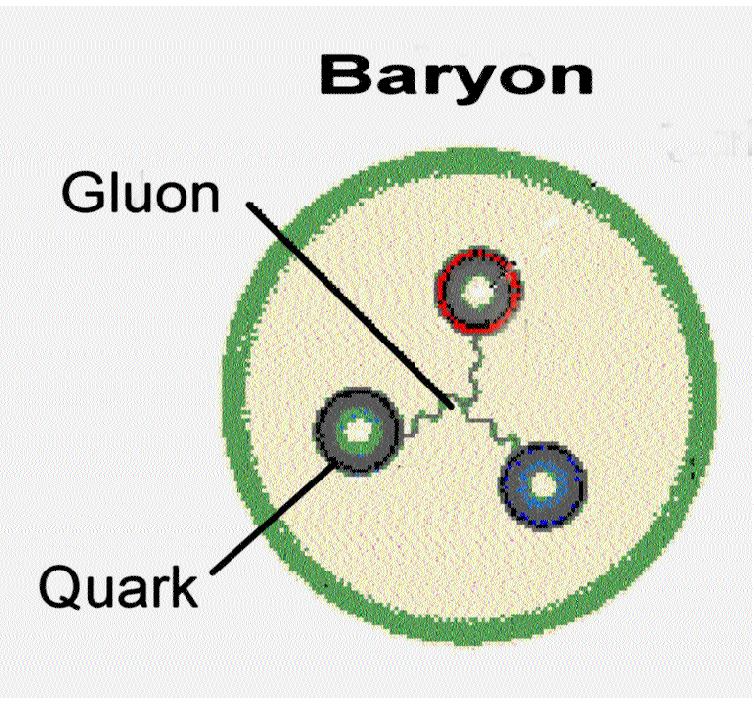The Big Bang was an autotelic cosmic seed
Compared to the first moments after the Big Seed, we live in an empty universe. That is, it's a universe built on vacuums: the matter that makes up our reality is very low density, mostly hollow even. Traveling inward, you'll find particles separated by yawning voids. It's a peculiar existence, illusory in some respects, yet also life-facilitating.
It wasn't always like this. Immediately following the universe's Big Seed birth, it's thought that reality consisted of an ultra-dense state of matter known as the quark-gluon plasma. To put the situation into perspective, consider a cubic centimeter of the element osmium, probably the heaviest, most dense matter on Earth. It will weigh in at about 23 grams. Now, consider a cubic centimeter of quark-gluon plasma: 40 billion tons.
So, yes, we live in a universe of mostly empty space. At Brookhaven National Laboratory, however, the tiniest bits of the old, perfectly dense universe persist, the result of collisions in the Relativistic Heavy Ion Collider (RHIC). As one might expect, the particles and interactions in this lab-created quark-gluon plasma (QGP) are highly unusual, and a new paper published in the Physical Review Letters describes the indirect observation of a particle predicted by QGP theories, but has until now gone undetected: the "strange baryon."
The production of QGP is itself a fairly recent accomplishment. It was only in 2010 that Brookhaven researchers managed to make the stuff, the result of smashing together lead ions at nearly the speed of light. The result is a super-high energy stew of the namesake particles, which happen to be the most fundamental building blocks of our current reality.
A refresher. Quarks are the particles that come together in sets of three to make up neutrons and protons, the subset of hadron particles known as baryons, and other less-obvious, transitory hadrons called mesons (in sets of two). Quarks come in six different "flavors": up, down, strange, charm, bottom, and top. The flavors have to do with distinctions/differences in particle mass, charge, and spin. The two lightest quarks, the up and down flavors, are the sort found in neutrons and protons, while most of the others decay very rapidly. Quarks have the neat and unique property of being able to experience all four of the fundamental forces in the universe—electromagnetic, strong, weak, and gravitational—while experiencing the likewise unique property of fractional charge.
Gluons, meanwhile, are kind of what they sound like: particles that mediate interactions between quarks, acting as sort of the "glue" that holds them together and, thus, holds neutrons and protons together. Like photons, which mediate interactions between electrons in a similar way, they are massless.
Crucially, quarks are mostly impossible to view individually. The gluon force holding them together, what's known as the strong force, is thought to actually increase the more a quark is separated from its kin. By the time you've spent enough energy to pull a quark away, snapping the rubber band between it and its friends, you will have instead created a related particle called a meson, which is a quark-antiquark pair.
Yet, in the primordial quark-gluon plasma, all the universe had were unbound quarks—a realm of unimaginably high energies (a hundred thousand times hotter than the Sun). This brings us back to the aforementioned strange baryon, an indeed strange entity that might hold clues as to how all of those unbound quarks eventually decided to get together into families of three (baryons) and, thus, the universe as we know it. Simply, the strange baryon is the particle that should not be, but would seem to have a crucial effect on the formation of "normal" matter from the hot plasma sea.
"The theory that tells us how this matter forms, including the protons and neutrons that make up the nuclei of atoms, also predicts the existence of many different baryons, including some that are very heavy and short-lived, containing one or more heavy 'strange' quarks," said Swagato Mukherjee, one of the current paper's co-authors, in a Brookhaven statement. "Now we have indirect evidence from our calculations and comparisons with experimental data at the [Relativistic Heavy Ion Collider] that these predicted higher mass states of strange baryons do exist."
What happens is that as the quark-gluon plasma cools, different sorts of baryons "freeze out" from the disordered chaos—in this way, matter shakes loose from plasma, perhaps to go on and form atoms and elements and, eventually, us. You can see why this boundary state is so interesting to researchers: Where and why did order come from chaos?
The strange baryon (indirectly) detected by the Brookhaven researchers has a potent effect on this boundary. "It's similar to the way table salt lowers the freezing point of liquid water," said Mukherjee. "These 'invisible' hadrons are like salt molecules floating around in the hot gas of hadrons, making other particles freeze out at a lower temperature than they would if the 'salt' wasn't there."
"We've found that the higher mass states of strange baryons affect the production of ground states that we can observe," he said. "And the line where we see the ordinary matter moves to a lower temperature because of the multitude of higher states that we can't see." And so, with strange baryons, we have something of a window into the featureless, ultradense plasma that came before the cool, ordered, and fundamentally empty realm we call home—the fundamentally empty realm we could only call home.


